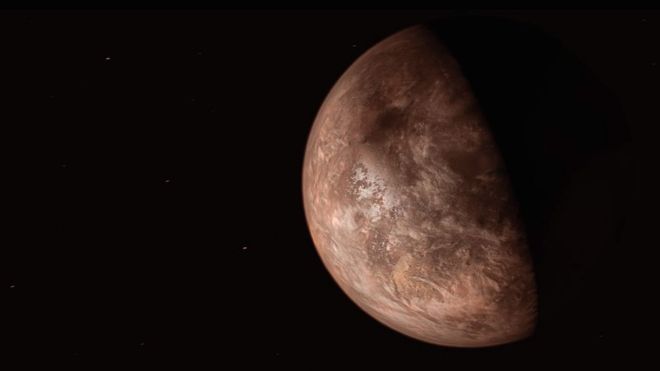Exoplanet discovered around neighbouring star
4 || risingbd.com

Risingbd Desk: Astronomers have discovered a planet around one of the closest stars to our Sun.
Nearby planets like this are likely to be prime targets in the search for signatures of life, using the next generation of telescopes.
The planet's mass is thought to be more than three times that of our own, placing it in a category of world known as "super-Earths".
It orbits Barnard's star, which sits "just" six light-years away.
Writing in the journal Nature, Guillem Anglada Escudé and colleagues say this newly discovered world has a mass 3.2 times bigger than the Earth's.
"We think that this is what we call a Super-Earth - that would be possibly a mostly rocky planet with a massive atmosphere. It's probably very rich in volatiles like water, hydrogen, carbon dioxide - things like this. Many of them are frozen on the surface," the astronomer, from Queen Mary University of London, said.
"The closest analogue we may have in the Solar System might be the moon of Saturn called Titan, which also has a very thick atmosphere and is made of hydrocarbons. It has rain and lakes made of methane."
The planet, Barnard's Star b, is about as far away from its star as Mercury is from the Sun. It's the second closest exoplanet to Earth after Proxima Centauri b, whose discovery was announced in 2016.
Barnard's Star is an extremely dim object known as a "red dwarf"; it's about 3% as bright as the Sun, so it emits far less solar energy.
The planet orbits beyond a boundary called the "snow line", which is past the traditional habitable zone, where water can remain liquid on the surface.
On distance alone, it's estimated that temperatures would be about -150C on the planet's surface. However, a massive atmosphere could potentially warm the planet, making conditions more hospitable to life.
The researchers used the radial velocity method for their detection. The technique can detect "wobbles" in a star caused by the gravitational pull of an orbiting planet.
These wobbles also affect the light coming from the star. As it moves towards Earth its light appears shifted towards the blue part of the spectrum and, as it moves away, it appears shifted towards the red.
Source: BBC
risingbd/Nov 15, 2018/Mukul
risingbd.com























